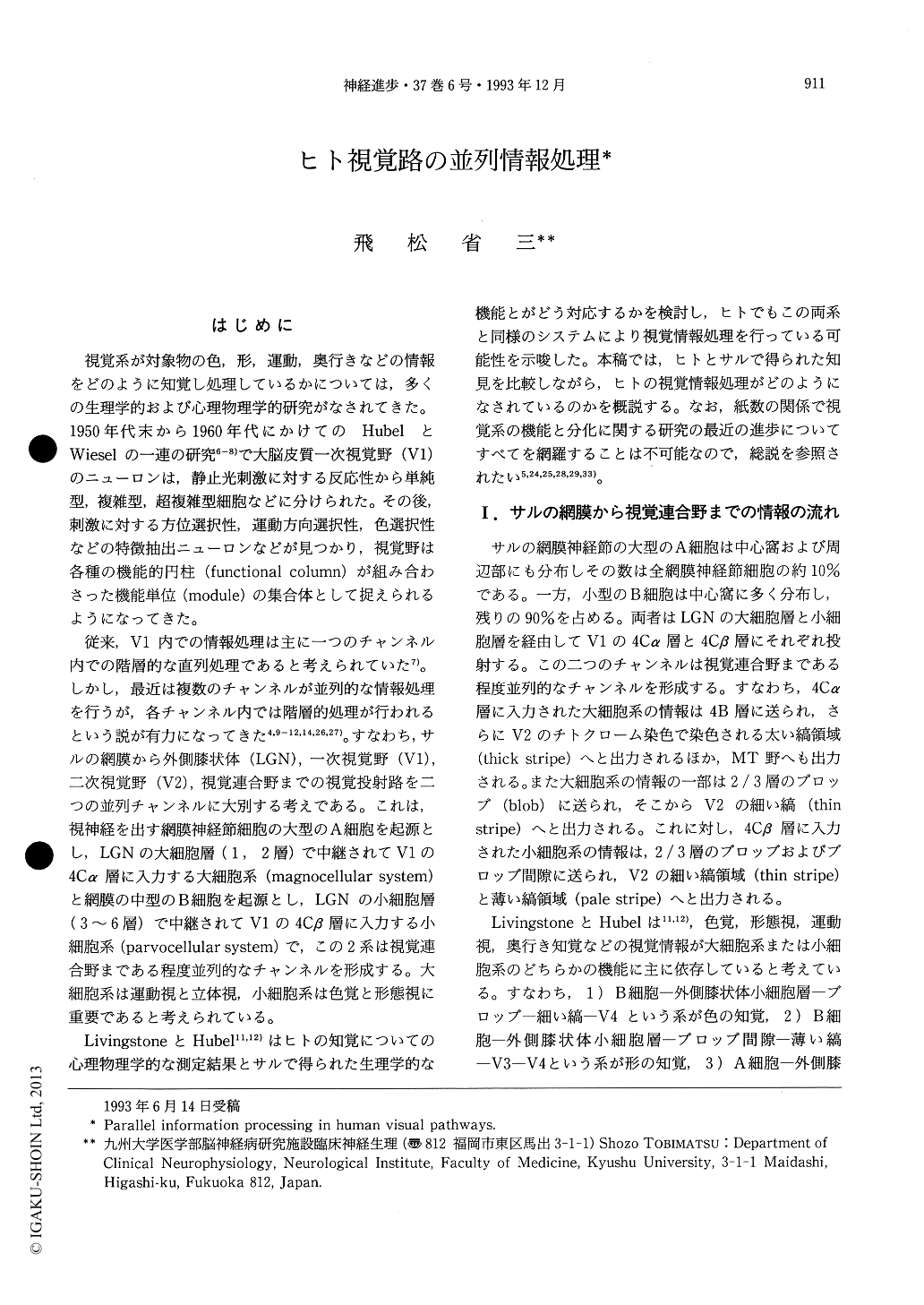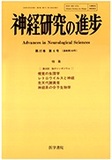Japanese
English
- 有料閲覧
- Abstract 文献概要
- 1ページ目 Look Inside
はじめに
視覚系が対象物の色,形,運動,奥行きなどの情報をどのように知覚し処理しているかについては,多くの生理学的および心理物理学的研究がなされてきた。1950年代末から1960年代にかけてのHubelとWieselの一連の研究6-8)で大脳皮質一次視覚野(V1)のニューロンは,静止光刺激に対する反応性から単純型,複雑型,超複雑型細胞などに分けられた。その後,刺激に対する方位選択性,運動方向選択性,色選択性などの特徴抽出ニューロンなどが見つかり,視覚野は各種の機能的円柱(functional column)が組み合わさった機能単位(module)の集合体として捉えられるようになってきた。
従来,V1内での情報処理は主に一つのチャンネル内での階層的な直列処理であると考えられていた7)。しかし,最近は複数のチャンネルが並列的な情報処理を行うが,各チャンネル内では階層的処理が行われるという説が有力になってきた4,9-12,14,26,27)。すなわち,サルの網膜から外側膝状体(LGN),一次視覚野(V1),二次視覚野(V2),視覚連合野までの視覚投射路を二つの並列チャンネルに大別する考えである。これは,視神経を出す網膜神経節細胞の大型のA細胞を起源とし,LGNの大細胞層(1,2層)で中継されてV1の4Cα層に入力する大細胞系(magnocellular system)と網膜の中型のB細胞を起源とし,LGNの小細胞層(3~6層)で中継されてV1の4Cβ層に入力する小細胞系(parvocellular system)で,この2系は視覚連合野まである程度並列的なチャンネルを形成する。大細胞系は運動視と立体視,小細胞系は色覚と形態視に重要であると考えられている。
Recent advances in parallel information processing of primates and humans have been reviewed. The first part of this article reviews what is known about physiology and anatomy of the primate visual pathways. Many lines of evidence suggest that the primate visual system consists of the parvocellular (P) and the magnocellular (M) pathways. M-system originates from the A retinal ganglion cells that project to the visual cortex (V1) via the magnocellular layers of the lateral geniculate nucleus (LGN). This system plays an important role for motion and stereopsis. P-system derives from the B retinal ganglion cells that project to V1 via the parvocellular layers of the LGN. This system shows selectivity for color vision and form perception. The second part focuses on the information processing of the human visual pathways. Psychophysical evidence suggests that there are also P and M systems in humans. However, there have been few electrophysiological studies which intend to separate the responses specific to P and M systems in human visual evoked potentials (VEPs). Based on the physiological distinctions between P and M systems, we have demonstrated that the use of isoluminant color patterns and apparent motion display allows us to evaluate P and M systems, respectively.

Copyright © 1993, Igaku-Shoin Ltd. All rights reserved.


